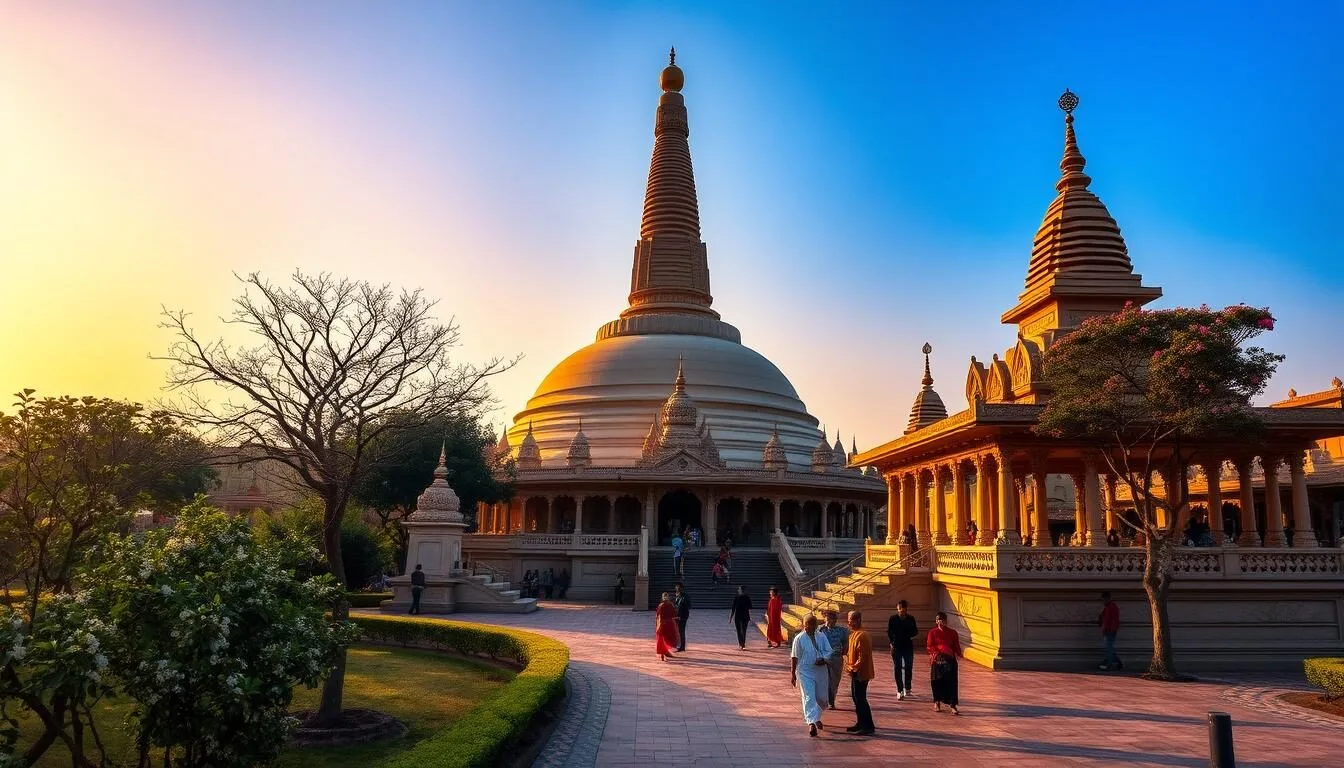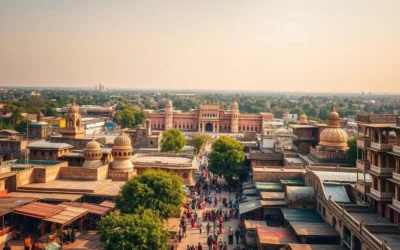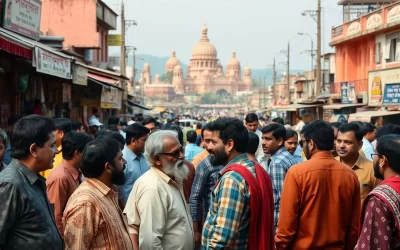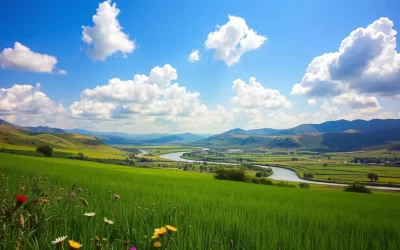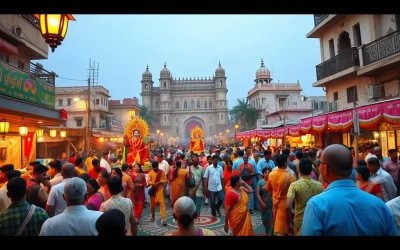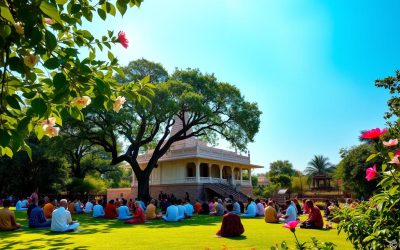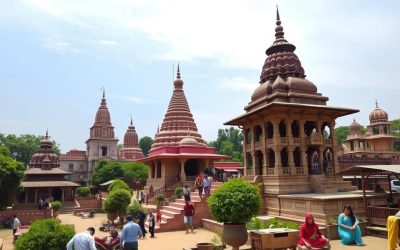✓ Accommodations✓ Flights✓ Rental Cars✓ Tours & Activities
You are about to embark on a spiritual journey like no other, as you explore the ancient city of Gaya, a place where history and faith converge. Located on the banks of the revered Phalgu River, Gaya is a city steeped in religious significance, attracting millions of pilgrims each year.
Gaya is not just a place of worship; it’s an experience that weaves together Buddhist and Hindu heritage, offering a unique glimpse into India’s rich cultural tapestry. As you visit the sacred sites, including the renowned Bodh Gaya, where Lord Buddha attained enlightenment, you’ll discover the essence of this ancient city’s enduring appeal.
With its rocky hills, historic temples, and monasteries, Gaya invites you to explore its many wonders, making it a must-visit destination for anyone drawn to the spiritual and historical treasures of India.
The Spiritual Significance of Gaya, Bihar
As you step into Gaya, Bihar, you’re immediately enveloped in its profound spiritual aura. This city is not just a geographical location; it’s a confluence of faith, history, and culture that has been a beacon for pilgrims and travelers alike for centuries.
Gaya is named after the demon king Gayasur, who, according to Hindu mythology, was a devoted follower of Lord Vishnu. This mythological origin story sets the tone for Gaya’s significance as a place of spiritual importance.
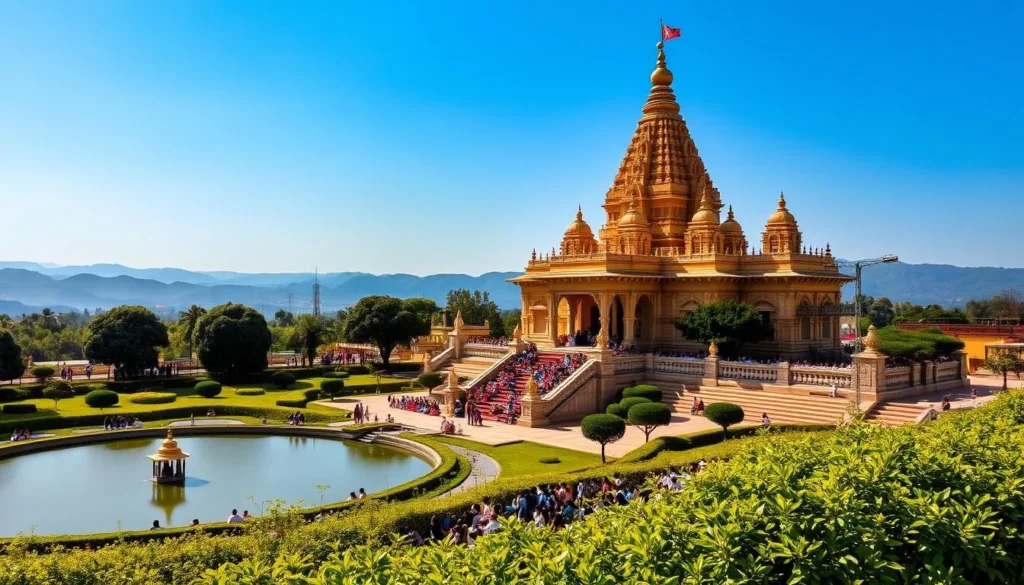
Historical Background of Gaya
Gaya’s history is as rich as it is complex, spanning thousands of years and weaving together various cultural and religious threads. The city developed as a significant center for ancestral worship, particularly with the pind-daan ceremony, which continues to attract millions of Hindu pilgrims annually.
The evolution of Gaya through different historical periods, from ancient times through the Buddhist golden age to the present day, has contributed to its status as a cultural and religious hub in eastern India. Its strategic location along ancient trade routes further enhanced its importance.
| Historical Period | Significance | Key Events |
|---|---|---|
| Ancient Times | Emergence as a center for ancestral worship | Pind-daan ceremony origins |
| Buddhist Golden Age | Bodh Gaya’s significance for Buddhists | Gautam Buddha’s enlightenment |
| Present Day | Continued religious and cultural importance | Millions of pilgrims visit annually |
Gaya is also home to Bodh Gaya, a place of immense significance for Buddhists worldwide, as it is the site where Gautam Buddha acquired enlightenment under the Bodhi Tree. This temple complex is a testament to Gaya’s status as a pivotal place of spiritual journey for people around the world.
Understanding Gaya’s historical background provides a deeper appreciation for its current status as a major pilgrimage site. The city’s ability to maintain its relevance through the ages is a testament to its enduring spiritual significance.
The Spiritual Significance of Gaya, Bihar
As a sacred site for both Buddhists and Hindus, Gaya holds a unique position in the spiritual landscape of India. This city in Bihar is home to numerous religious landmarks, with the Mahabodhi Temple Complex being the most revered.
Religious Importance for Buddhists and Hindus
Gaya is home to Bodh Gaya, the place where Gautam Buddha acquired enlightenment. The Mahabodhi Temple Complex, a UNESCO World Heritage Site, is the most sacred location for Buddhists. For Hindus, Gaya is significant for the pind-daan ceremony performed for ancestors.
Understanding the significance of Gaya involves appreciating its importance for both Buddhists and Hindus. Here are key aspects that highlight its religious importance:
- Understand why Gaya holds immense significance for both Buddhists and Hindus, making it a rare dual-faith pilgrimage destination in India.
- Learn how Bodh Gaya became the epicenter of Buddhism after Prince Siddhartha attained enlightenment under the Bodhi tree, transforming into Lord Buddha.
- Discover the importance of Gaya for Hindus as a sacred place for performing pind-daan rituals that are believed to bring salvation to departed ancestors.
- Explore how these two major religions have coexisted harmoniously in Gaya for centuries, creating a unique spiritual atmosphere.
- Appreciate how pilgrims from across the world converge in this small Bihar city, creating a melting pot of diverse spiritual practices and traditions.
The temple complex in Bodh Gaya is not just a religious site but also a place of meditation and spiritual growth for visitors from around the globe. The atmosphere is serene, with the sacred Bodhi Tree being a focal point for meditation and reflection.
As you visit Gaya, you will experience the confluence of different spiritual traditions, making it a truly enriching experience. The city’s ability to host pilgrims from various faiths underscores its status as a significant spiritual hub.
The Spiritual Significance of Gaya, Bihar
In the heart of Bihar lies Gaya, a city named after the mighty Gayasur, whose story is deeply intertwined with its spiritual essence. Gaya is a place where history and mythology blend seamlessly, creating a rich tapestry of religious significance.
Legend of Gayasur and the City’s Name
Gaya is named after the demon (asura) king Gayasur, who was a devoted follower of Lord Vishnu. According to legend, Gayasur was so powerful that his dying wish was granted by Lord Vishnu – that the place where his body lay would become sanctified and anyone who offered pind-daan there would bring salvation to their ancestors.
The legend of Gayasur has several key aspects:
- Delving into the fascinating legend of Gayasur, the powerful demon king whose devotion to Lord Vishnu led to the naming and sanctification of Gaya.
- Discovering how Gayasur’s dying wish transformed this region into one of the most sacred places for Hindu ancestral rituals.
- Learning about the various mythological references to Gaya in ancient Hindu texts, including the Vayu Puran, Padma Puran, and Markandeya Puran.
- Understanding how this ancient legend continues to influence religious practices in modern-day Gaya, with specific rituals performed at temple sites associated with Gayasur’s body.
- Exploring how the Buddhist narrative of enlightenment, particularly at Bodh Gaya, later overlapped with this Hindu foundation, creating the rich spiritual tapestry that defines Gaya today.
Gaya’s spiritual significance is not limited to its historical background but is also deeply connected to its religious importance for both Buddhists and Hindus. The city’s temple complexes and sacred sites continue to attract pilgrims from around the world.
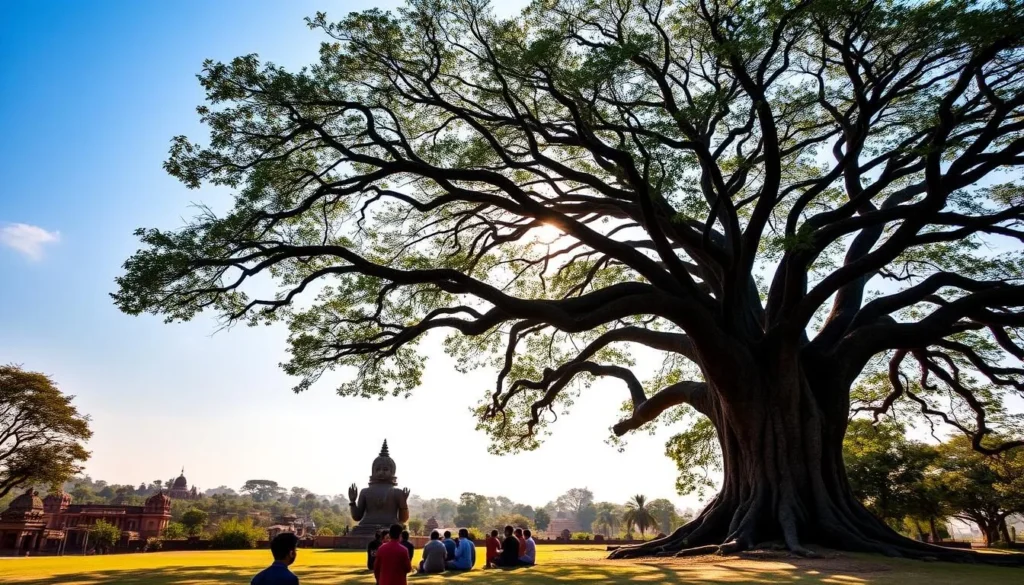
The story of Gayasur and the sanctification of Gaya is a testament to the city’s enduring history and its importance in the religious landscape of India. As a place where Lord Buddha attained enlightenment under the Bodhi Tree in Bodh Gaya, Gaya continues to be a significant place for Buddhists as well.
How to Reach Gaya: Transportation Guide
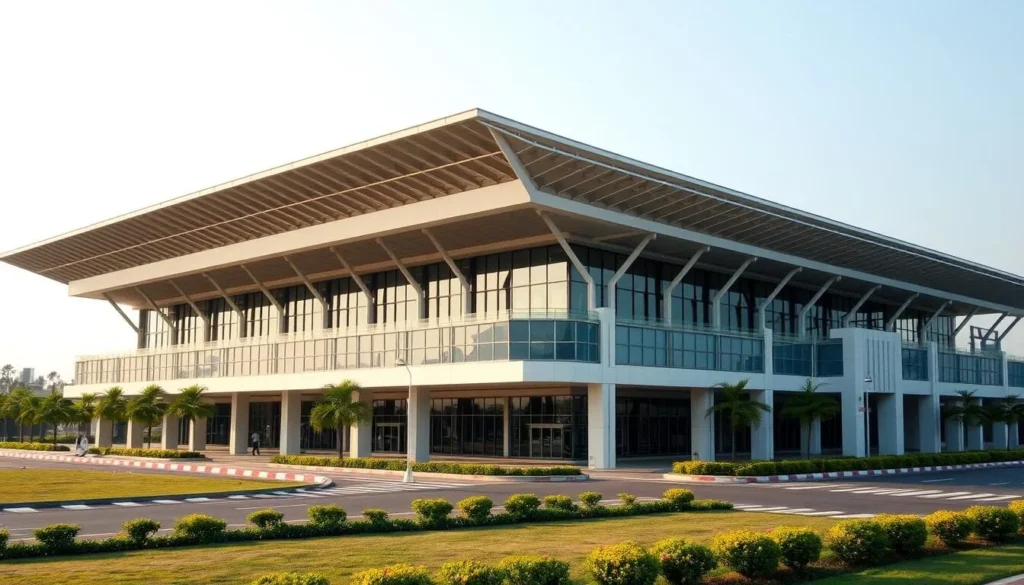
By Air: Gaya International Airport
Gaya International Airport is your gateway to the spiritual heart of Bihar, making your journey to Bodh Gaya seamless. Located about 7 kilometers from the center of Bodh Gaya, this airport, also known as Bodhgaya Airport, serves as a crucial entry point for pilgrims and tourists visiting the sacred Mahabodhi Temple and other significant places in the region.
The airport, with the IATA code GAY and ICAO code VEGY, offers direct flights from major Indian cities such as Varanasi and Kolkata. When you plan to visit Bodh Gaya, flying into Gaya International Airport is the most convenient option, saving you time and effort in reaching your destination.
Here are some key points to consider when flying into Gaya:
- Plan your air travel to Gaya using the convenient Gaya International Airport (IATA: GAY), also known as Bodhgaya Airport, located just 7 kilometers from Bodh Gaya.
- Learn about the international connections available at Gaya Airport, which serves pilgrims and tourists from Buddhist countries like Thailand, Myanmar, Bhutan, and Sri Lanka.
- Discover the domestic flight options that connect Gaya to major Indian cities including Delhi, Kolkata, and Varanasi.
- Understand the seasonal flight schedules that increase during peak pilgrimage periods and Buddhist festivals.
- Get practical information about airport transfers to Bodh Gaya and other parts of Gaya district, including taxi services and pre-paid booths available at the terminal.
Upon arrival at Gaya International Airport, you’ll find it easy to reach the temple and other significant places in Bodh Gaya. The airport’s proximity to the city center means you can quickly get to your accommodation or directly to the sacred sites. Whether you’re there to explore the religious significance of the area or simply to experience the tranquility of this place, Gaya International Airport is your first step towards a memorable journey.
As you plan your trip, consider the various travel options and choose the one that best suits your needs. With Gaya International Airport, you’re just a short drive away from experiencing the spiritual essence of Bodh Gaya and its surroundings.
How to Reach Gaya: Transportation Guide
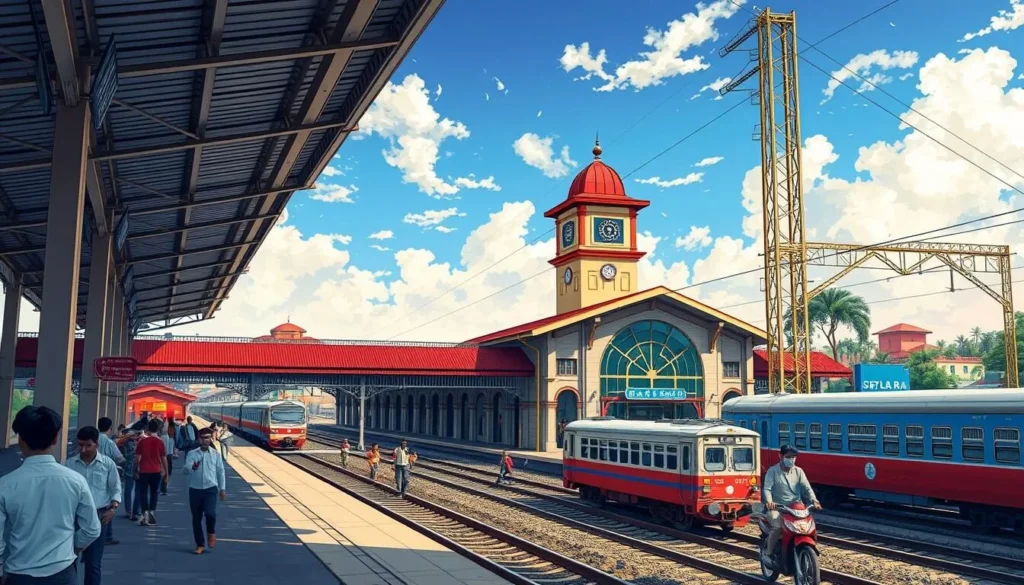
Gaya Junction Railway Station is a crucial transportation hub for travelers visiting Bodh Gaya. It is a major railway junction in eastern India, connecting Gaya to various significant cities across the country.
By Train: Gaya Junction Railway Station
Gaya Junction railway station serves the city of Gaya, which is the headquarters of Gaya district and Magadh Division. The station is well-connected to cities like Patna, Varanasi, New Delhi, Kolkata, and Puri, making it easily accessible by train.
- Navigate your journey to Gaya by train through the well-connected Gaya Junction Railway Station, a major railway hub in eastern India.
- Learn about the numerous train connections from major Indian cities including Delhi, Mumbai, Kolkata, Chennai, and Varanasi that make Gaya easily accessible.
- Discover the convenience of the railway station’s location, just 16 kilometers from Bodh Gaya, with regular shuttle services and taxis available for transfers.
- Understand the different train categories serving Gaya Junction, from premium Rajdhani and Shatabdi Express trains to more economical passenger services.
- Get practical tips about booking train tickets in advance, especially during peak pilgrimage seasons when trains to Gaya fill up quickly.
Visiting the temple and other sacred places around Bodh Gaya becomes easier when you plan your trip via Gaya Junction Railway Station. The station’s proximity to significant temples and places of interest makes it an ideal entry point for pilgrims and tourists.
How to Reach Gaya: Transportation Guide
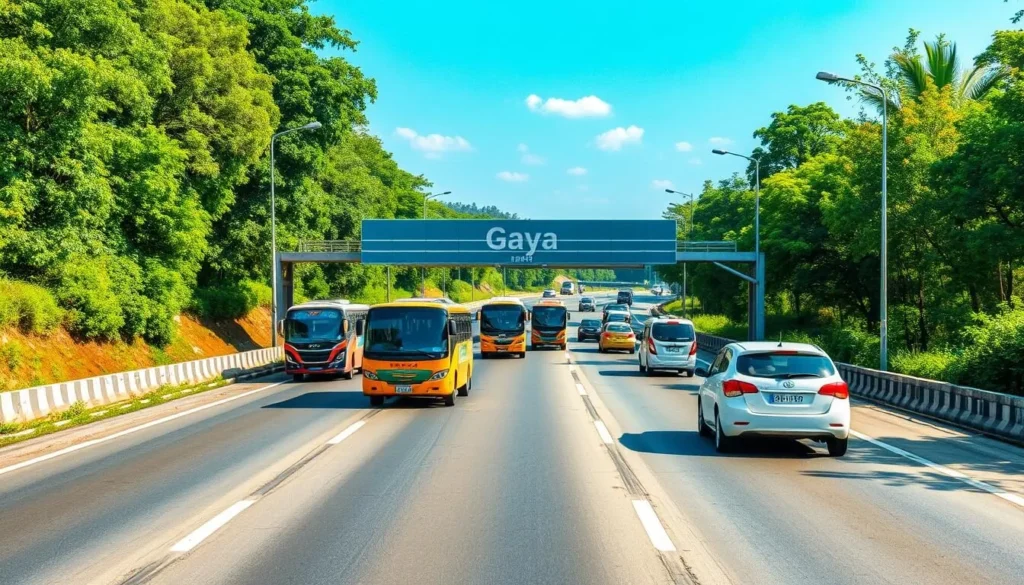
Gaya is easily accessible by road, making it a convenient destination for travelers. The city is well-connected to major cities in Bihar and neighboring states.
By Road: Routes and Bus Services
Gaya’s road connectivity ensures a smooth journey for pilgrims and tourists alike. You can plan your road journey to Gaya with information about the well-maintained highway network connecting it to major cities.
- Learn about the various bus services to Gaya, including state-run and private operators that provide regular connections from Patna, Varanasi, Ranchi, and other regional hubs.
- Discover the convenience of hiring private taxis or joining shared jeep services for a more flexible travel experience to Gaya.
- Understand the road conditions and typical travel times from major starting points: 2.5 hours from Patna (140 km), 6 hours from Varanasi (260 km), and 4 hours from Ranchi (220 km).
- Get practical advice about the best roadside stops, fuel stations, and rest areas along the major routes leading to Gaya for a comfortable journey.
If you’re planning to visit Bodh Gaya, a significant pilgrimage site, you’ll find that the road journey is quite straightforward. The distance from Patna to Bodh Gaya is about 140 kilometers, which takes approximately 2.5 hours by road.
Upon reaching Gaya, you can visit the revered Vishnupad Temple, a significant temple in the region, and other sacred places in and around the city.
Traveling to Gaya by road allows you to enjoy the scenic views and experience the local culture firsthand. Make sure to plan your travel itinerary accordingly, taking into account the travel times and road conditions.
Best Time to Visit Gaya
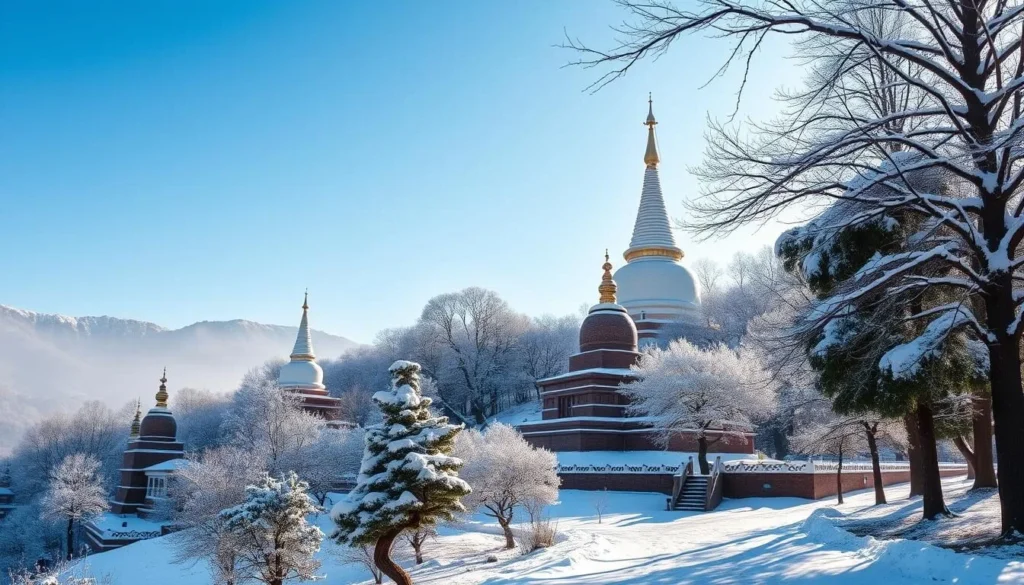
To make the most of your visit to Gaya, it’s crucial to know when to go. The city’s climate varies significantly throughout the year, impacting your travel experience.
Weather Patterns Throughout the Year
Gaya experiences a range of weather conditions across different seasons. The best time to visit Gaya is between October and March, when the weather is pleasant, with temperatures ranging from 8 to 25 degrees Celsius.
During the summer months (April to June), Gaya can be very hot, with temperatures soaring up to 45°C (113°F), making outdoor sightseeing challenging without proper preparation.
The monsoon season (July to September) brings heavy rainfall, which can occasionally disrupt travel plans but also transforms the landscape into a lush green setting.
- Plan your trip to Gaya with a clear understanding of its distinct seasonal weather patterns that can significantly impact your experience.
- Learn why winter (October to March) is considered the ideal time to visit Gaya, with comfortable temperatures and clear, sunny days perfect for exploration.
- Understand the challenges of summer visits (April to June) when temperatures can soar, making outdoor sightseeing uncomfortable.
- Get insights about the monsoon season (July to September), which brings heavy rainfall that can disrupt travel plans but also brings a lush green landscape.
- Discover how the changing seasons affect the atmosphere around the temples and sacred sites in Gaya, offering different perspectives on its spiritual landscape.
Visiting Bodh Gaya, a significant pilgrimage site for Buddhists, is a highlight of any trip to Gaya. Understanding the best time to visit this sacred place can enhance your spiritual experience.
Best Time to Visit Gaya
Peak Tourist Seasons
Thousands flock to Gaya during the peak tourist seasons, creating a lively atmosphere filled with spiritual energy. The pilgrimage season is busiest from September to January, making it an ideal time to experience the city’s vibrant culture.
You can expect bigger crowds during the peak tourist months and higher prices for accommodation. If you’re looking to join the vibrant atmosphere, this is the best time to visit. However, if you prefer fewer crowds, you might want to consider alternative periods.
Navigating Peak Tourist Seasons
- Understand that September to January marks the busiest period when thousands of Buddhist pilgrims and tourists flock to Bodh Gaya.
- Learn about the special atmosphere during Buddha Jayanti (May) and Pitru Paksha (September-October).
- Get practical advice about booking accommodations well in advance during peak seasons.
- Discover the advantages of visiting during shoulder seasons (February-March and September).
Visiting Gaya during the peak tourist seasons can be a rewarding experience, with the city’s temples and places being particularly vibrant. The Mangla Gauri Temple, a significant religious site, is a must-visit during this time.
Best Time to Visit Gaya
Cultural Festivals and Celebrations
If you’re planning to visit Gaya, timing your trip with the city’s vibrant festivals can enhance your experience, offering a deeper dive into its rich cultural heritage. Gaya hosts several significant events throughout the year that attract visitors from around the world.
One of the most significant events is the Buddha Jayanti celebrations, which take place in late April or May during the full moon. This event commemorates Buddha’s birth, enlightenment, and parinirvana, drawing thousands of devotees and tourists alike.
Another important festival is the Pitru Paksha Mela, held during the Hindu month of Ashwin. This period is dedicated to ancestral rituals, with thousands of Hindu pilgrims performing sacred ceremonies at the Vishnupad Temple and Falgu River.
The Buddha Mahotsava is a three-day cultural extravaganza that showcases Buddhist traditions through performances, exhibitions, and religious ceremonies. It’s a unique opportunity to experience the rich cultural heritage of Gaya.
In addition to these major events, Gaya also hosts smaller but equally meaningful celebrations like the Kagyu Monlam Chenmo and Nyingma Monlam Chenmo prayer festivals. These events bring together monks and devotees from across the Buddhist world, creating a vibrant and spiritual atmosphere.
Plan your visit to coincide with Gaya’s vibrant festival calendar to experience the city’s unique cultural experiences throughout the year.
Mahabodhi Temple Complex: UNESCO World Heritage Site
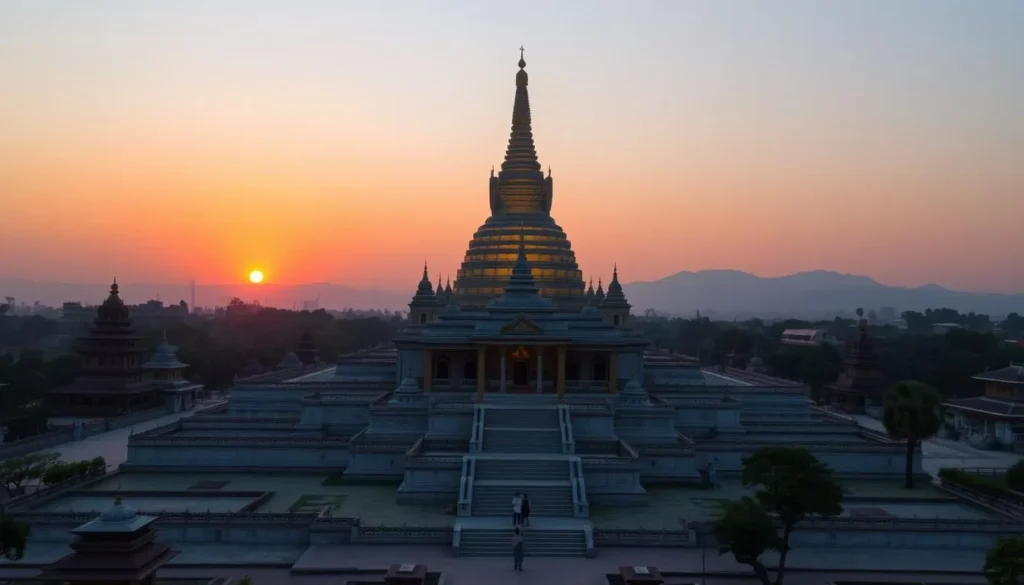
The Mahabodhi Temple Complex, a UNESCO World Heritage Site, is a must-visit destination in Bodh Gaya. This sacred site is not only a testament to the rich history of Buddhism but also a place where you can experience the profound spiritual energy that pervades the air.
Architecture and Historical Significance
The Mahabodhi Temple stands tall at 55 meters, symbolizing the path to enlightenment. Its history dates back to the 3rd century BCE when Emperor Ashoka first built a shrine at this sacred spot. The current structure, largely from the 5th-6th centuries CE, is a masterpiece of ancient Indian architecture.
As you explore the temple complex, you’ll be struck by its grandeur and the intricate details that adorn its exterior. The pyramidal spire, or shikhara, has become an iconic symbol of Buddhist sacred structures. The complex also includes ornate stone railings, four smaller towers at each corner, and intricate carvings that tell stories of Buddha’s life.
- Marvel at the magnificent Mahabodhi Temple Complex, the crown jewel of Bodh Gaya and one of Buddhism’s most sacred sites worldwide.
- Explore the impressive 55-meter tall main temple with its pyramidal spire (shikhara) that has become an architectural icon of Buddhist sacred structures.
- Learn about the temple’s fascinating history dating back to the 3rd century BCE when Emperor Ashoka first established a shrine at this sacred spot.
- Understand the significance of the temple’s UNESCO World Heritage status, granted in 2002 in recognition of its outstanding universal value to humanity.
- Discover the architectural elements that make the temple unique, including its ornate stone railings, four smaller towers at each corner, and the intricate carvings that adorn its exterior.
The Mahabodhi Temple Complex is not just a historical site; it’s a living, breathing place of worship where you can witness daily rituals and meditation sessions. As you walk through the complex, you’ll feel a deep sense of peace and connection to the Buddhist heritage.
Mahabodhi Temple Complex: UNESCO World Heritage Site
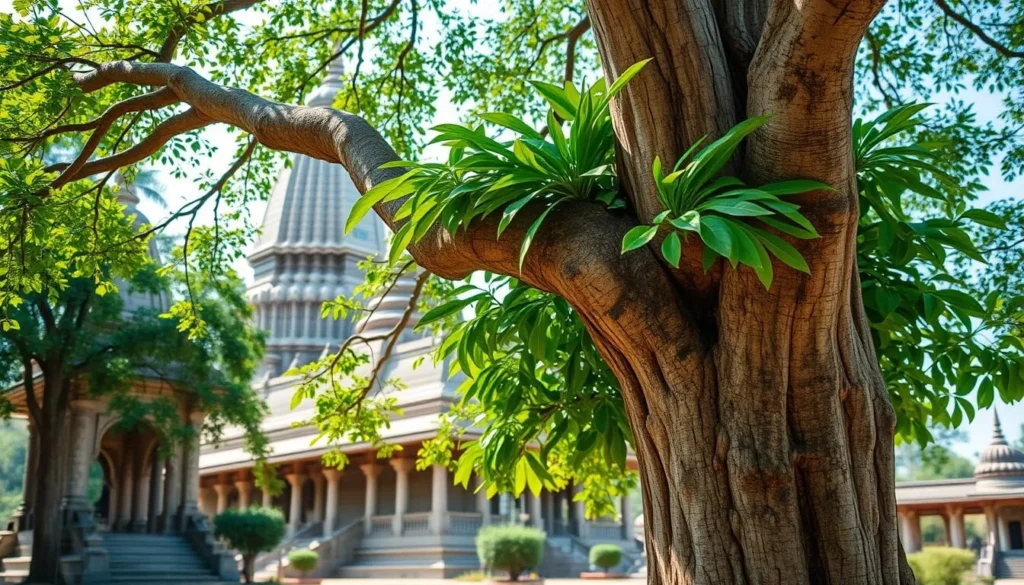
The Bodhi Tree, a direct descendant of the original tree under which Lord Buddha meditated, stands majestically within the Mahabodhi Temple Complex. This sacred fig tree is not just a symbol of Buddhism but a living connection to the enlightenment of Lord Buddha over 2,500 years ago.
The Sacred Bodhi Tree
The Bodhi Tree is at the very heart of the Mahabodhi Temple Complex. It’s a fifth-generation descendant of the original tree where Buddha found enlightenment. Buddha attained enlightenment while meditating underneath this tree for seven weeks without moving from his position. There is a shrine on the same spot where he meditated, called Animisalocana cetiya.
As you visit the Bodhi Tree, you can:
- Stand in awe before the sacred Bodhi Tree, a direct descendant of the original tree under which Lord Buddha attained enlightenment.
- Learn about the tree’s lineage, understanding that it’s a fifth-generation descendant grown from a cutting of the original tree taken to Sri Lanka.
- Discover the Animisalocana cetiya, a small shrine marking the exact spot where Buddha sat in meditation.
- Observe the daily rituals performed around the Bodhi Tree, where monks and pilgrims offer prayers and meditate.
- Understand the botanical significance of this ancient Ficus religiosa species, specially protected due to its spiritual importance.
The Bodhi Tree is more than just a historical landmark; it’s a living symbol of enlightenment that continues to inspire millions of Buddhists worldwide. As you circumambulate the tree and observe the rituals, you’ll feel a deep sense of connection to the teachings of Lord Buddha.
Mahabodhi Temple Complex: UNESCO World Heritage Site
As a sacred site in Bodh Gaya, the Mahabodhi Temple Complex offers a profound spiritual experience through its daily rituals. Visitors can join or watch traditional Buddhist practices all day, creating a unique and enriching experience.
Daily Rituals
The temple opens at 5:00 AM, beginning with morning Sutta chanting from 5:30-6:00 AM. This serene morning ritual sets a peaceful tone for the day. At 10:00 AM, there’s a traditional Kheer offering ceremony, symbolizing the meal offered to Buddha after his enlightenment.
Immerse yourself in the spiritual atmosphere by participating in or observing these daily rituals that have been performed for centuries. The evening Sutta chanting from 6:00-7:00 PM is particularly breathtaking, with hundreds of butter lamps illuminating the temple grounds, creating a magical atmosphere.
Meditation Sessions
Throughout the day, group meditation sessions are held in designated areas around the temple complex. Practitioners from around the world gather here in silent contemplation, creating a powerful collective energy.
Join these meditation sessions to deepen your spiritual practice or simply to experience the tranquility of the temple complex. The Mahabodhi Temple is a place where meditation and ritual come together in a beautiful expression of Buddhist tradition.
By participating in the daily rituals and meditation sessions at the Mahabodhi Temple Complex, you can gain a deeper understanding of Buddhist practices and experience the peace that pervades this sacred site.
The Great Buddha Statue
Bodh Gaya’s Great Buddha Statue is a breathtaking sight, symbolizing the teachings of Buddha through its serene meditation posture. This colossal statue stands at an impressive height of 80 feet, making it one of the largest Buddha statues in India.
Construction and History
The construction of the Great Buddha Statue was an ambitious project that took seven years to complete, requiring the skilled craftsmanship of 12,000 stonemasons working together. The statue is made from a combination of sandstone blocks and red granite, giving it both durability and aesthetic beauty.
The statue represents Buddha in a profound meditation posture (dhyana mudra) atop a blooming lotus, symbolizing enlightenment rising from the mud of worldly attachment. You can explore the fascinating interior of the statue, which contains a hollow spiral staircase leading up to chest level and houses approximately 16,300 small bronze Buddha images.
Key Highlights of the Great Buddha Statue:
- Marvel at the impressive 80-foot Great Buddha Statue, an iconic landmark of Bodh Gaya.
- Learn about the ambitious construction project that required seven years to complete and the skilled craftsmanship of 12,000 stonemasons.
- Discover the unique combination of materials used, including sandstone blocks and red granite.
- Explore the interior of the statue, featuring a hollow spiral staircase and around 16,300 small bronze Buddha images.
- Understand the spiritual significance of the statue’s meditation posture atop a blooming lotus.
Visiting the Great Buddha Statue is a deeply enriching experience, offering insights into the history, craftsmanship, and spiritual significance of this magnificent monument. As you stand before the statue, you are surrounded by an aura of peace and tranquility, making it a truly unforgettable experience.
The Great Buddha Statue
As you approach the Great Buddha Statue, you’re met with an aura of serenity and spiritual significance. This magnificent statue is a representation of Buddha in a profound meditation posture on a lotus, symbolizing peace and harmony.
Design and Symbolism
The Great Buddha Statue is an open-air statue made from a combination of sandstone and red granite blocks. Its meditation posture, known as dhyana mudra, signifies enlightenment rising from worldly attachment. The statue’s design incorporates several symbolic elements, including the lotus pedestal, which represents purity emerging from the muddy waters of attachment.
Architectural Features of the Great Buddha Statue include its perfect proportions, following traditional Buddhist iconographic guidelines while achieving a monumental scale. The statue’s east-facing orientation allows it to catch the morning sunlight, creating a spectacular visual effect that enhances its spiritual presence.
The statue’s construction and design elements work together to create a masterpiece of modern religious sculpture. By examining the impressive architectural details, appreciating the perfect proportions, and understanding the symbolic elements, visitors can deepen their appreciation for this iconic landmark.
The Great Buddha Statue
As you step into the serene surroundings of the Great Buddha Statue, you’ll be enveloped in a sense of tranquility and spiritual connection. The statue, located at Great Buddha Campus Road, Bodh Gaya, Bihar, is a breathtaking sight that embodies the essence of Buddhism.
Tips for an Unforgettable Visit
To make the most of your visit to the Great Buddha Statue, consider arriving early in the morning around 7:00 AM. The golden sunlight creates perfect conditions for photography, and the atmosphere is more peaceful before the crowds arrive.
The visiting hours are from 7:00 am to 12:00 noon and 2:00 pm to 5:30 pm, giving you ample time to explore and appreciate the statue’s grandeur. Positioning yourself at the recommended vantage points will help you capture the best photographs: from the front entrance for a full frontal view, from the small garden on the right side for a profile perspective, or from a distance to capture the statue’s impressive scale against the sky.
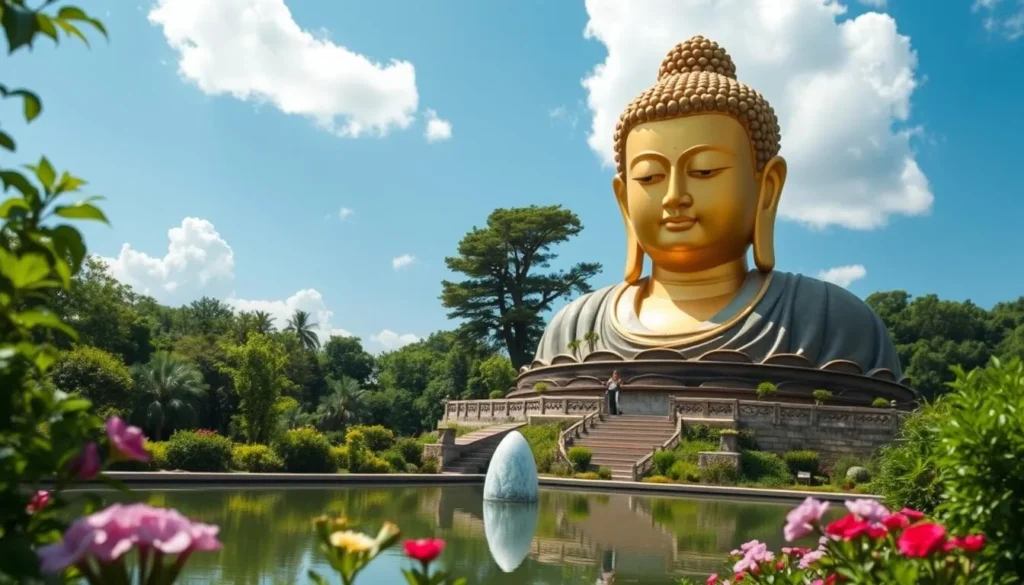
- Plan Your Visit: Take advantage of the break between noon and 2:00 PM when the site closes temporarily to plan the rest of your day’s itinerary around Bodh Gaya.
- Special Festivals: Consider visiting during special Buddhist festivals when the statue becomes the centerpiece of celebrations, surrounded by thousands of butter lamps and floral offerings for a truly magical experience.
By following these insider tips, you’ll be able to fully immerse yourself in the spiritual significance of the Great Buddha Statue and create unforgettable memories of your visit to Bodh Gaya.
Vishnupad Temple: A Hindu Pilgrimage Site
As you explore the spiritual landscape of Gaya, Bihar, the Vishnupad Temple stands out as a significant pilgrimage site. This revered temple is dedicated to Lord Vishnu and is believed to be the place where he left his footprint on a solid rock.
The temple’s significance is deeply rooted in its connection to the Ramayana. According to legend, Lord Ram, Sita, and Lakshman visited this site to perform the pind-daan ceremony for King Dasharatha. This ancient ritual continues to be performed today, with thousands of Hindus gathering every year to offer oblations to their ancestors.
A Place of Historical and Spiritual Importance
The Vishnupad Temple is not only a place of worship but also a site of great historical importance. The current structure was rebuilt in 1787 by Maratha queen Ahilyabai Holkar, though its religious significance stretches back thousands of years. During the 15-day Pitru Paksha period, the temple becomes the center of activity, with tens of thousands of pilgrims performing ancestral rituals.
In conclusion, the Vishnupad Temple is a must-visit place in Gaya, Bihar, offering a unique blend of spirituality, history, and culture. As you plan your visit to Bodh Gaya, make sure to include this significant site in your itinerary.
—
The above is subject to change.
Check back often to TRAVEL.COM for the latest travel tips and deals.
